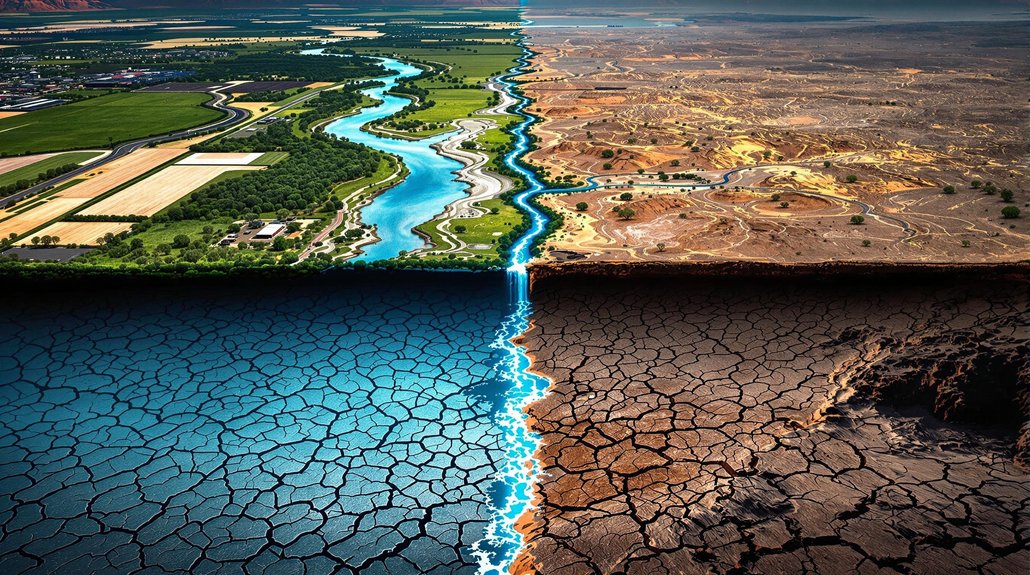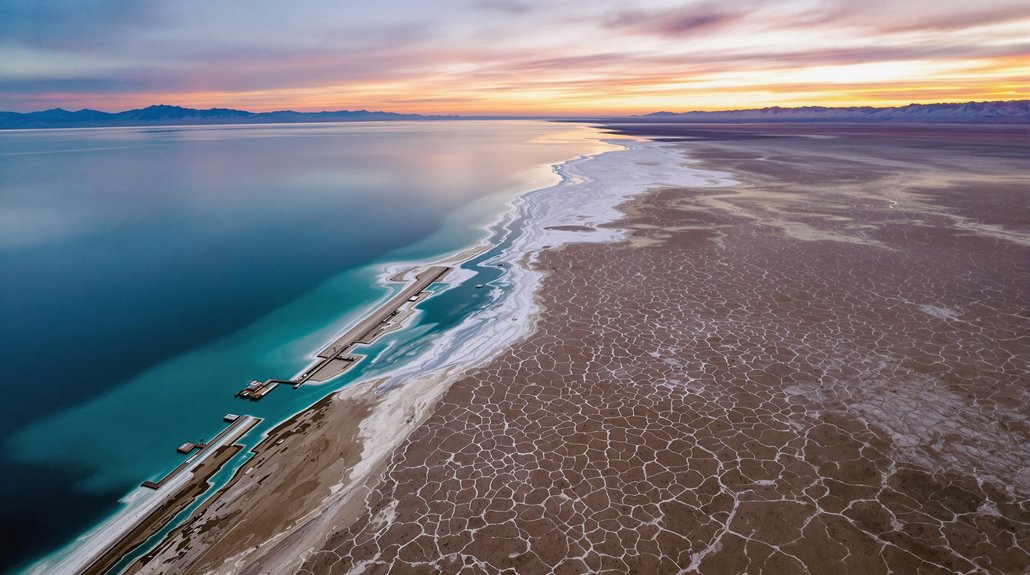Drought conditions in Quebec have severely limited hydropower exports to New England, which relies on Canadian electricity for about 9% of its supply. Hydro-Québec is now prioritizing domestic customers, causing exports to fall to less than half of 2022 levels. This shortage forces the region to use more expensive fossil fuels, raising energy bills and pollution. The situation exposes vulnerabilities in renewable energy systems that depend on stable weather patterns. Further details reveal concerning implications for regional energy security.
As drought conditions persist in Quebec, Canada’s hydropower exports to New England have dropped dramatically, raising concerns about energy security across the region. Water levels in Quebec’s reservoirs are unusually low, forcing Hydro-Québec to prioritize domestic customers over international exports. In 2024, exports to New England fell to less than half of what they were in 2022.
The reduction comes at a critical time for New England, which gets about 9% of its electricity from Quebec and New York grids. With less hydropower available, the region must rely more heavily on fossil fuels like natural gas and oil. These alternatives are both more expensive and produce more pollution than clean hydropower.
New England faces a costly dilemma as clean Canadian hydropower shrinks, forcing a return to dirtier, pricier fossil fuels.
During cold snaps, when energy demand peaks, the absence of Canadian hydropower could lead to electricity shortages or grid instability. Despite its environmental impacts, hydropower remains one of the most reliable energy sources that can quickly respond to fluctuating grid demands. Power companies might struggle to meet demand, especially if the cold weather lasts for extended periods. The situation exposes the vulnerability of depending on energy from outside sources.
The economic impact is already being felt across New England. Consumers face higher energy bills as utilities switch to more expensive fuels. This situation contradicts research showing that two-way exchanges between New England and Quebec could yield significant benefits for both regions. Businesses, particularly those that use large amounts of energy, are seeing their operating costs rise. This adds to inflation pressures that are already affecting the region.
Hydro-Québec’s decision to skip recent electricity capacity auctions signals that the problem won’t be solved quickly. The company is carefully managing its strategic reserves, which means exports might remain limited for some time. The resulting reliability risks could serve as a wake-up call for consumers who have taken stable energy supply for granted.
New England states are now forced to reconsider their clean energy strategies, many of which counted on Canadian hydropower as a reliable source. Policymakers must look at alternatives like expanding local wind and solar power, investing in battery storage, and modernizing the power grid.
The situation highlights a difficult truth: renewable energy systems, even established ones like hydropower, remain vulnerable to climate variations. For New England, this means finding ways to become more energy independent.








